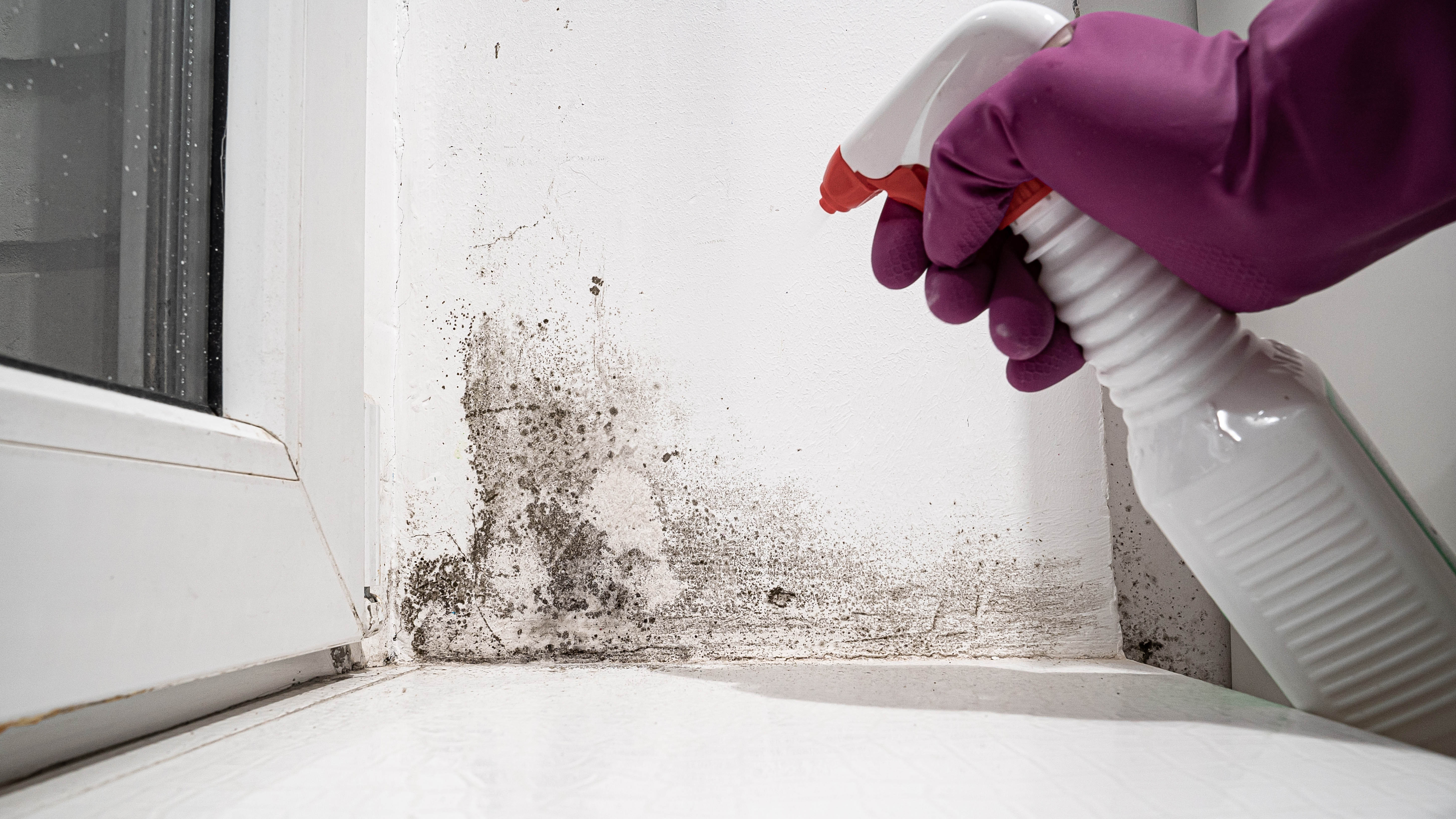5 mistakes you’re making when removing mold
Avoid these common mistakes when getting rid of mold in your home

When it comes to cleaning every room in the home, it’s always unpleasant when you spot black mold. And although you want to take action and quickly get rid of mold,there are some mistakes you’re making when removing mold.
In fact, these common mistakes will often do more harm than good — and could make the problem worse. Typically, mold spores grow in areas with excess humidity and levels of moisture, such as the bathroom, kitchen or basement. It can even be found on all kinds of surfaces including bed mattress mold. Not only can mold damage your home, but the airborne spores are considered a health hazard, causing allergic reactions if inhaled or touched. In severe cases, mold can also cause asthma attacks. That’s why it’s so important to prevent mold the correct way, without unintentionally encouraging mold growth in your home. It can also cause make your home smell unpleasant.
So before you take out your trusted cleaning products, here are the mistakes to avoid when removing mold.
If you don’t have one of the best dehumidifiers, you could always try one of these 5 houseplants that will help to prevent mold.
1. Spraying bleach on mold

While it might be tempting to spray moldy walls or surfaces with bleach, this is actually a common mistake. And while bleach is our trusted go-to cleaner for removing the most difficult of stains around the home, it’s not good for getting rid of mold.
In fact, the United States Environmental Protection Agency (EPA), strongly advises not to use bleach on mold. Despite getting rid of initial surface dirt, in most cases, mold spores will still be ingrained in the material — meaning the problem is lurking underneath. This is especially the case for certain porous materials such as wood.
Instead, it’s recommended to dilute white distilled vinegar in a spray bottle before applying to mouldy areas. Alternatively, you can scrub the mold away using dish soap, warm water and a scrubbing brush such as the Amazer Scrub Brush ($7.99, Amazon), then rinse and dry afterwards with a microfiber cloth.
Sign up to get the BEST of Tom's Guide direct to your inbox.
Get instant access to breaking news, the hottest reviews, great deals and helpful tips.
Bear in mind that bleach is a strong chemical cleaner, so if you do wish to use it around the home, remember to always keep the area well-ventilated by opening up a window, door or extractor vent. However, it will do very little to banish mold. Beside mold, here are 7 things you should never clean with bleach.
2. Painting over/hiding mold

It can look rather unsightly when you spot a mold patch ruining your beautiful white wall, however, avoid getting out the paint brush to cover it. Another mistake when removing mold is painting over it.
And while there are “mold-resistant” paints available, applying it directly over moldy surfaces will not kill it completely. Mold spores may still be growing underneath the surface, and could spread — causing more issues in the long-run.
If you do need to retouch or paint your room however, remove as much mold as possible from the surface with a dedicated mold cleaner or white distilled vinegar. Then ensure the area is entirely free from mold and dry before painting over it. However, if you’re dealing with a more serious mold problem, it’s always best to seek professional advice rather than painting over mold to disguise it. It’s always best to never take shortcuts!
3. Spreading mold with the same cleaning cloth

We may have our designated cleaning cloths or old rags, but a common mistake is to use the same cloth to clean everywhere else. If you use the same cloth, you’ll only be spreading mold to other areas. Once the spores start to grow, this will inevitably worsen the problem.
It’s always best to use a separate cloth to tackle mold, and use a clean one for other areas. In fact, it’s ideal to use paper towels that you can easily dispose of, rather than cloths. This will prevent spreading mold spores to other places around the home.
4. Ignoring the root cause of mold

This leads on to another common mistake of ignoring the root cause of your mold problems.
Essentially, mold issues are caused by excess humidity in the room, so prevention is the key to reduce levels. In particular, winterizing our homes by sealing windows and cracks or using furnaces can unintentionally cause excess condensation, leading to mold growth.
Plus, when it’s freezing outside, we don’t tend to open up windows to allow proper ventilation. Despite the chill factor however, it’s always recommended to crack open windows or doors a couple of times a week to let in some fresh air, and prevent a build-up of moisture.
If you have a room without windows, make use of exhaust fans around the home. These will speed up the venting process, especially in humid rooms such as the bathroom, basement or kitchen when you’re cooking up a storm and releasing a lot of steam from your oven, pots or pans.
In addition, there could be a leaky faucet or pipe around the home that is causing excess moisture. Any plumbing issues could lead to excess moisture and damp build-up in the home, leading to mold growth. If it’s a small task, you can learn how to fix a leaky bathtub faucet without calling in a plumber, or else call in a professional to tackle serious leaks.
5. Not wearing protective gear

This might seem extreme when it comes to doing housework, but some molds are highly toxic. In addition, mold spores can travel in the air while cleaning, and can become a serious health hazard to you or other members in the family who are exposed to it — especially young children.
When tackling mold, it’s advisable to wear long rubber or disposable gloves, eye protection, and a mask to avoid breathing in spores. This is especially vital for those with respiratory issues,and anyone with a weakened or compromised immune system should avoid entering the mold-infested space completely.
In the case of long-term mold problems however, it’s best to always seek advice from a professional who is trained in mold cleanup.
More from Tom's Guide

As the Homes Content Editor, Cynthia Lawrence covers all things homes, interior decorating, and garden-related. She has a wealth of editorial experience testing the latest, ‘must-have’ home appliances, writing buying guides and the handy ‘how to’ features.
Her work has been published in various titles including, T3, Top Ten Reviews, Ideal Home, Real Homes, Livingetc. and House Beautiful, amongst many.
With a rather unhealthy obsession for all things homes and interiors, she also has an interior design blog for style inspiration and savvy storage solutions (get rid of that clutter!). When she’s not testing cool products, she’ll be searching online for more decor ideas to spruce up her family home or looking for a great bargain!
